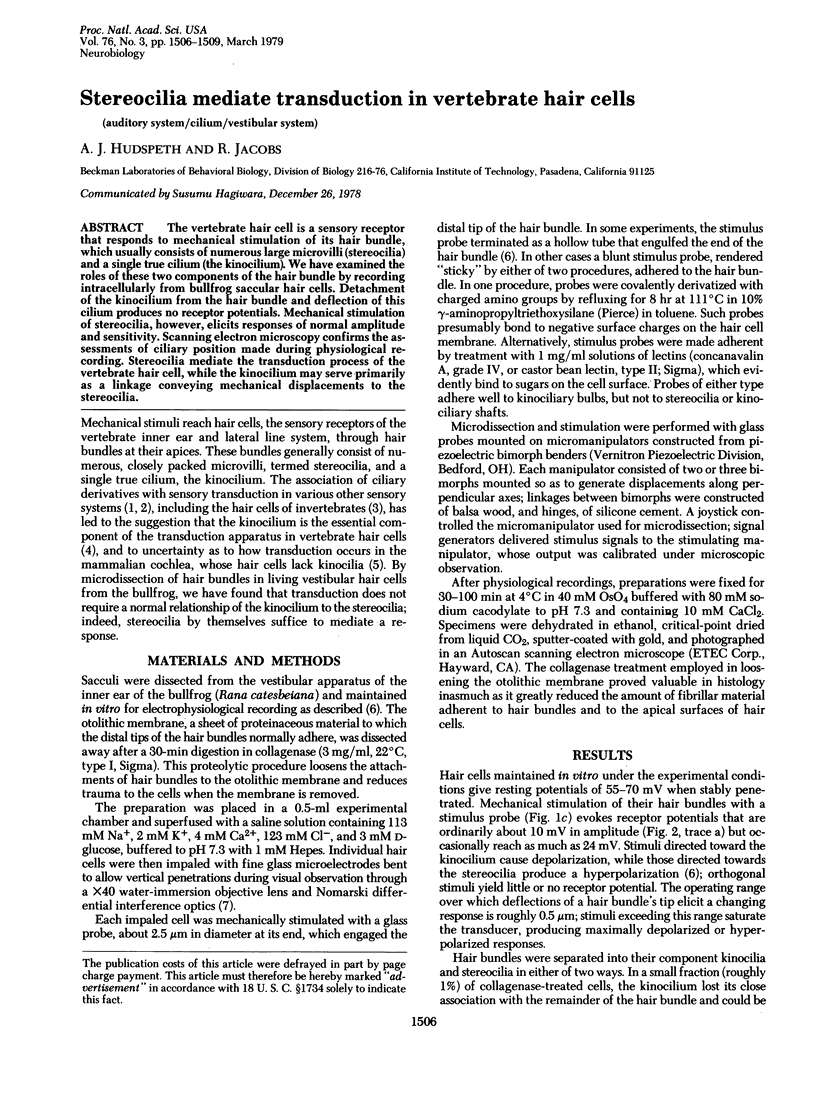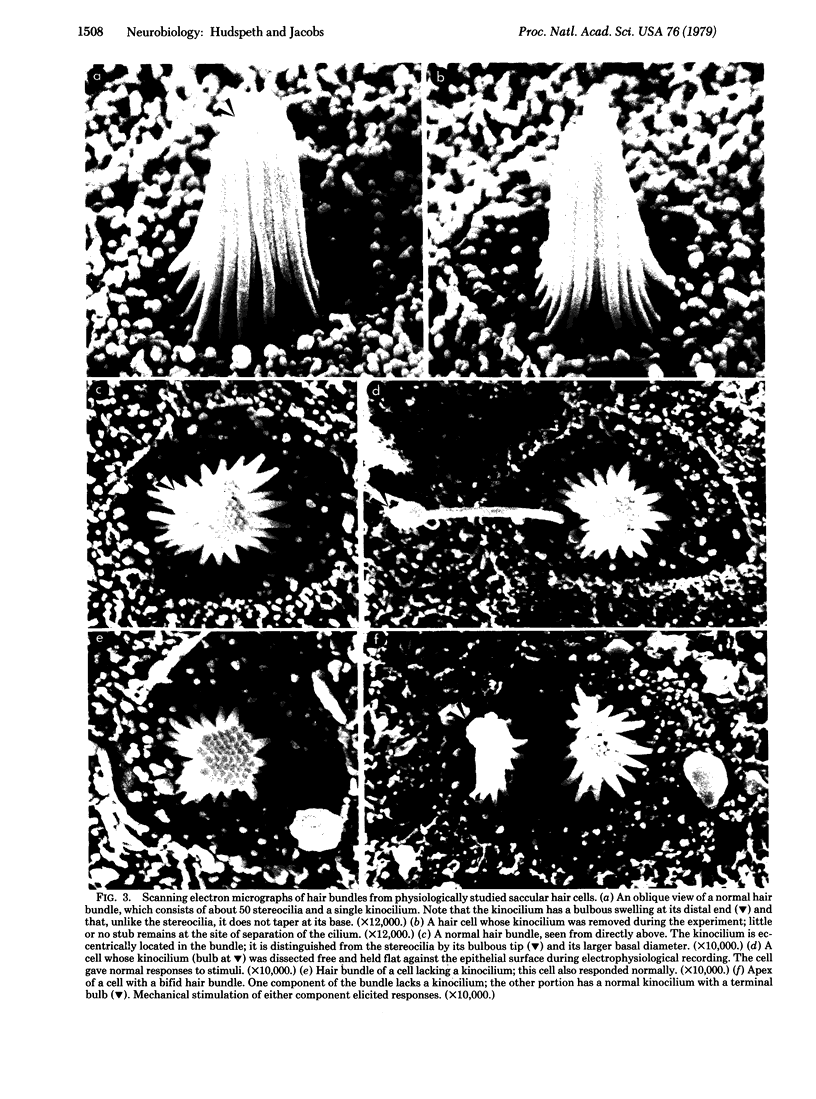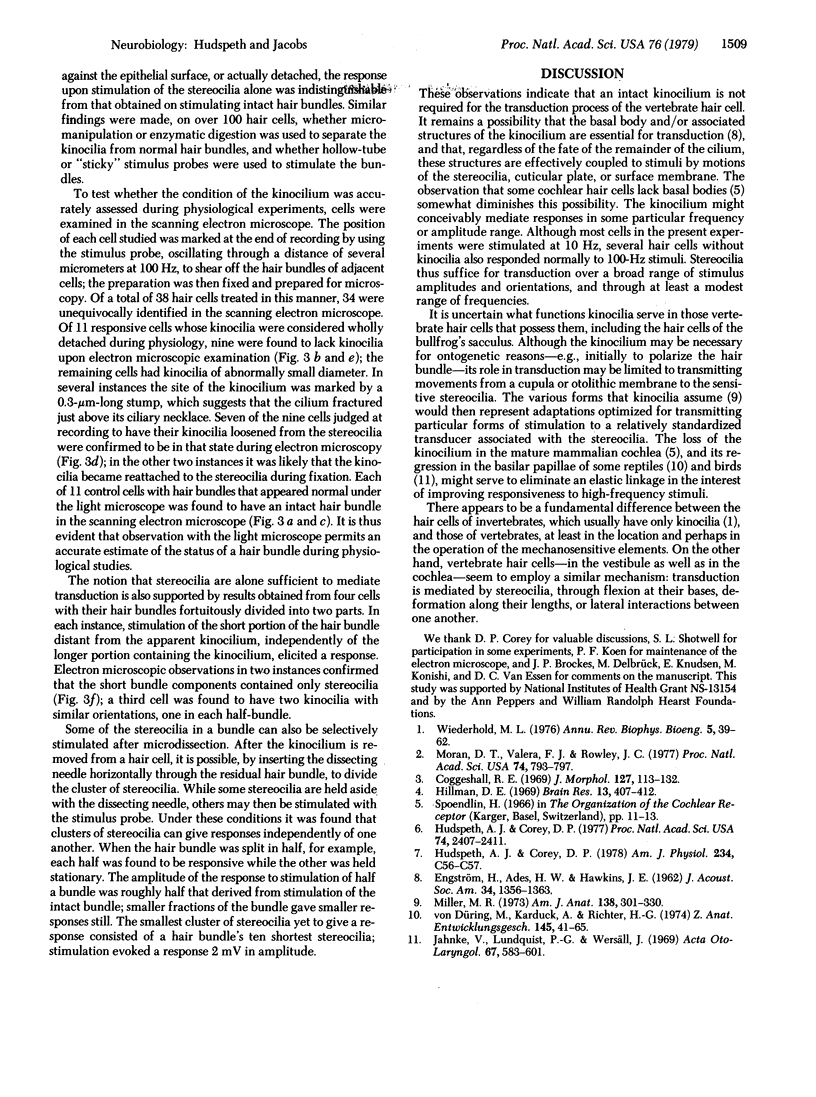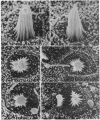Abstract
The vertebrate hair cell is a sensory receptor that responds to mechanical stimulation of its hair bundle, which usually consists of numerous large microvilli (stereocilia) and a single true cilium (the kinocilium). We have examined the roles of these two components of the hair bundle by recording intracellularly from bullfrog saccular hair cells. Detachment of the kinocilium from the hair bundle and deflection of this cilium produces no receptor potentials. Mechanical stimulation of stereocilia, however, elicits responses of normal amplitude and sensitivity. Scanning electron microscopy confirms the assessments of ciliary position made during physiological recording. Stereocilia mediate the transduction process of the vertebrate hair cell, while the kinocilium may serve primarily as a linkage conveying mechanical displacements to the stereocilia.
Full text
PDF



Images in this article
Selected References
These references are in PubMed. This may not be the complete list of references from this article.
- Hillman D. E. New ultrastructural findings regarding a vestibular ciliary apparatus and its possible functional significance. Brain Res. 1969 Apr;13(2):407–412. doi: 10.1016/0006-8993(69)90301-1. [DOI] [PubMed] [Google Scholar]
- Hudspeth A. J., Corey D. P. Controlled bending of high-resistance glass microelectrodes. Am J Physiol. 1978 Jan;234(1):C56–C57. doi: 10.1152/ajpcell.1978.234.1.C56. [DOI] [PubMed] [Google Scholar]
- Hudspeth A. J., Corey D. P. Sensitivity, polarity, and conductance change in the response of vertebrate hair cells to controlled mechanical stimuli. Proc Natl Acad Sci U S A. 1977 Jun;74(6):2407–2411. doi: 10.1073/pnas.74.6.2407. [DOI] [PMC free article] [PubMed] [Google Scholar]
- Jahnke V., Lundquist P. G., Wersäll J. Some morphological aspects of sound perception in birds. Acta Otolaryngol. 1969 Jun;67(6):583–601. doi: 10.3109/00016486909125485. [DOI] [PubMed] [Google Scholar]
- Miller M. R. Scanning electron microscope studies of some lizard basilar papillae. Am J Anat. 1973 Nov;138(3):301–329. doi: 10.1002/aja.1001380303. [DOI] [PubMed] [Google Scholar]
- Moran D. T., Varela F. J., Rowley J. C., 3rd Evidence for active role of cilia in sensory transduction. Proc Natl Acad Sci U S A. 1977 Feb;74(2):793–797. doi: 10.1073/pnas.74.2.793. [DOI] [PMC free article] [PubMed] [Google Scholar]
- Wiederhold M. L. Mechanosensory transduction in "sensory" and "motile" cilia. Annu Rev Biophys Bioeng. 1976;5:39–62. doi: 10.1146/annurev.bb.05.060176.000351. [DOI] [PubMed] [Google Scholar]
- von Düring M., Karduck A., Richter H. G. The fine structure of the inner ear in caiman crocodilus. Z Anat Entwicklungsgesch. 1974;145(1):41–65. doi: 10.1007/BF00519125. [DOI] [PubMed] [Google Scholar]




